In modern business cultures of speed—schools and malls, hospitals and airports—maintenance expenses can silently deplete facility budgets. Plumbing fixtures like faucets and soap dispensers contribute more than is expected to that bottom line. Wherever a restroom is handled by thousands of users a day, every manual handle, valve, and mechanical element is an area of wear, location of leakage, and loss of efficiency.
Touchless technology is making that very reality. Apart from their self-obvious hygienic benefits, on-site experience now confirms touchless faucets and dispensers are powerful forces for reducing recurring maintenance expense in heavy-use buildings. Let’s examine what the figures—and actual experience—actually mean.
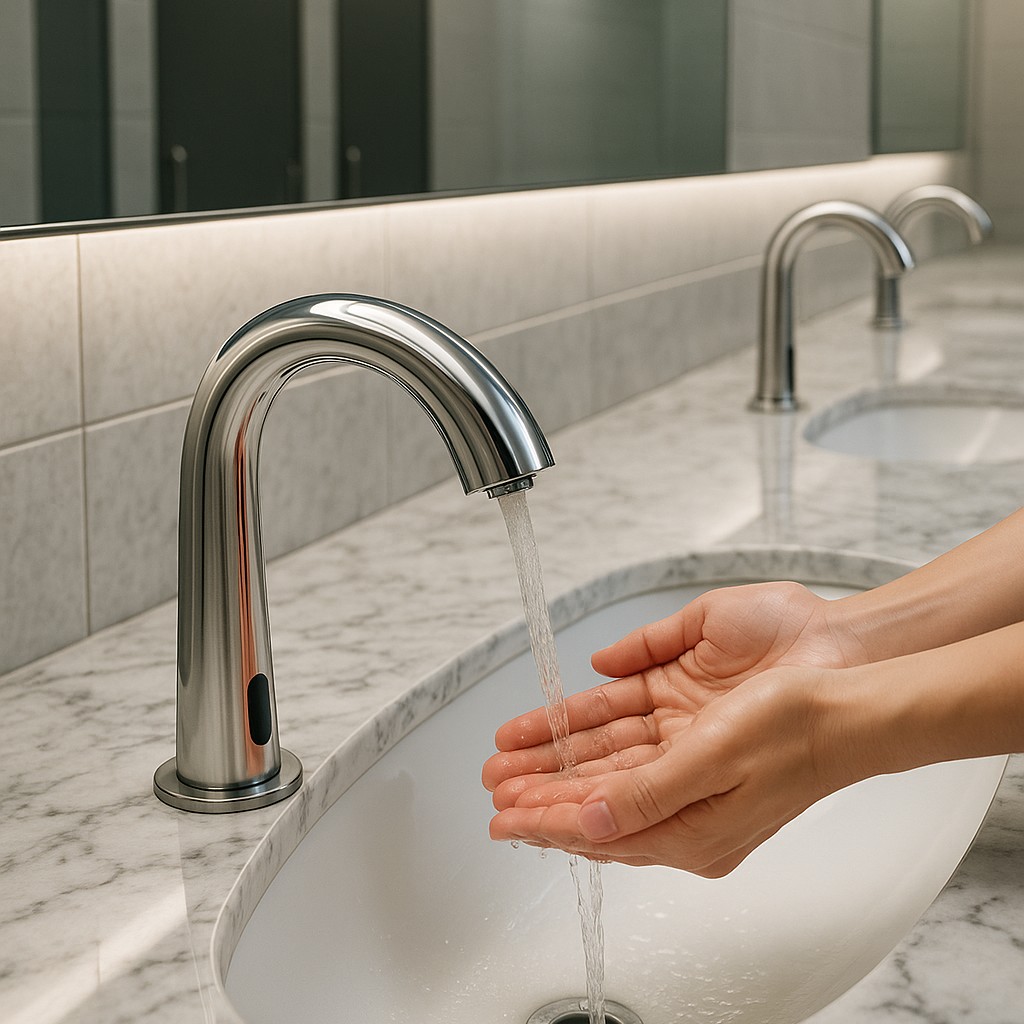
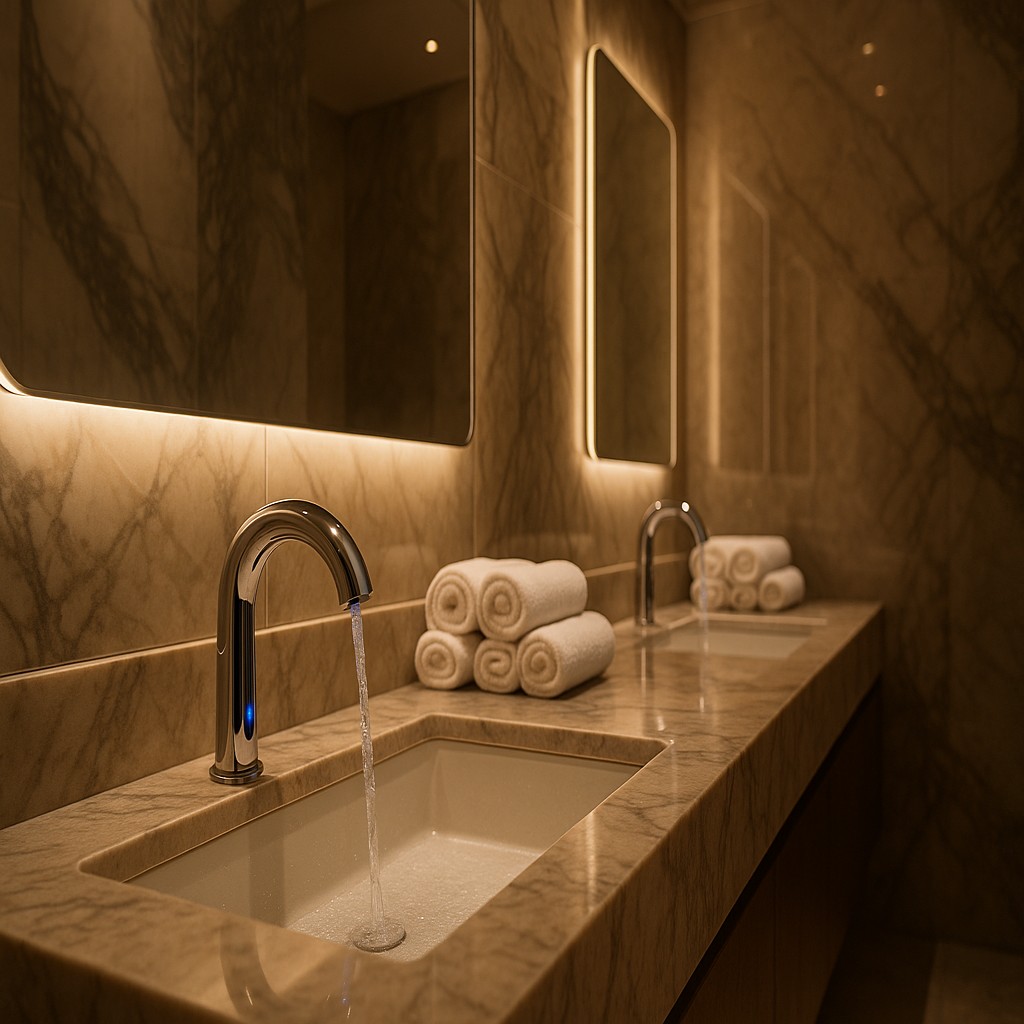
1. The Real Cost of “Hands-On” Fixtures
Old-fashioned hand-operated faucets may look cheaper initially, but facility directors know their cost of ownership is another matter. Real-world experience in heavy-use public restrooms confirms that manual fixtures will result in 25–35% more annual calls than their touchless counterparts.
The most frequent issues?
- Leaking valves
- Seals that wear out
- Users over-tightening or leaving handles partially open
The Hidden Costs
All these headaches amount to:
- Wasted water — a dripping faucet wastes more than 3,000 gallons per year.
- Reactive maintenance cost — emergency replacements will be three to five times greater than planned maintenance.
- Premature replacement — valves and manual handles are worn down faster in heavy-use operations.
Touchless systems, however, utilize motion sensors and electrically operated solenoid valves that only trigger water when needed, eliminating user mistake and reducing component wear.
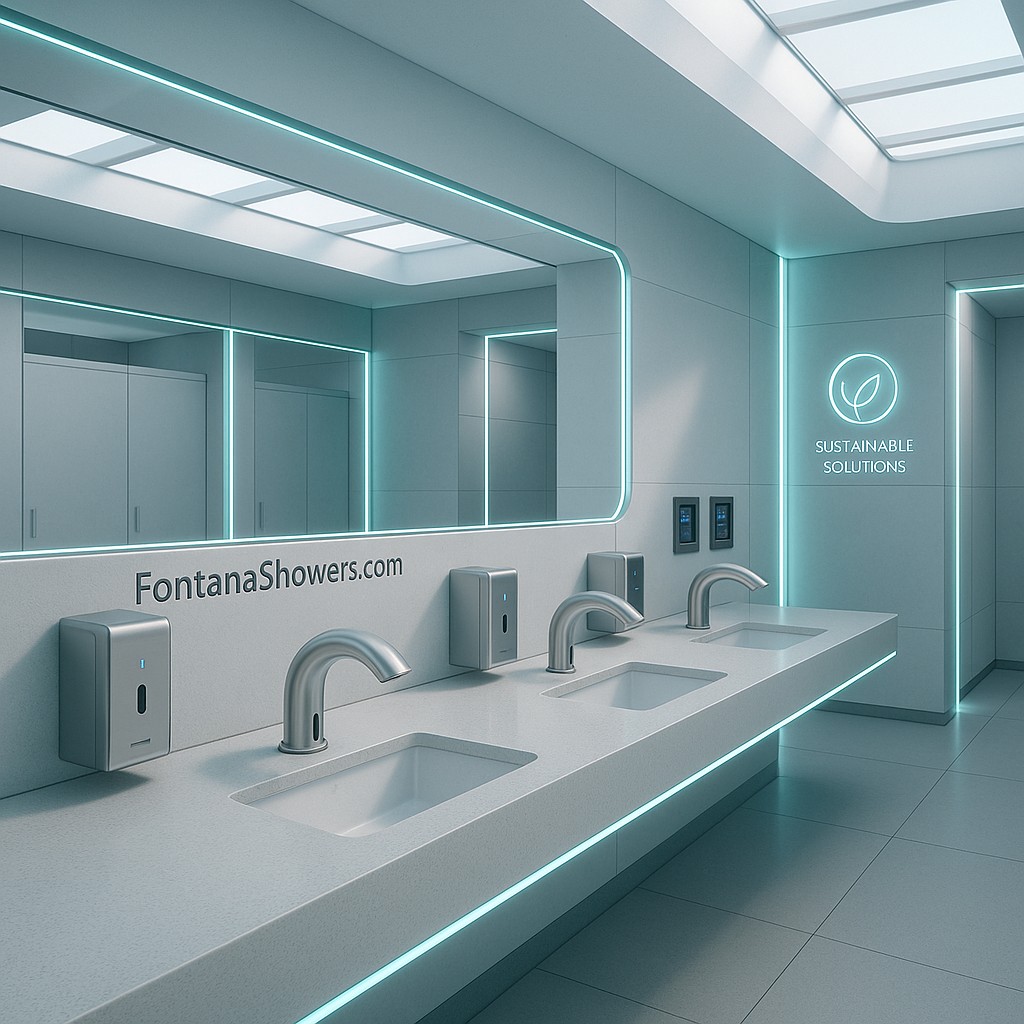

2. Predictive Maintenance Through Data
Modern touchless faucets now incorporate high-end smart telemetry modules that deliver real-time performance information. Use counts, flow rates, battery status, and diagnostic alarms are accessible to facility management through centralized dashboards.
All this data makes fixed-schedule maintenance proactive. Instead of waiting for a faucet to overflow or fail, maintenance personnel can identify anomalies—such as low battery voltage or aberrant flow—and repair them before downtime occurs.
Examples in Action
- A Midwestern university campus cut 40% of calls to fix faucets after six months of equipping them with smart telemetry systems.
- A nationwide retail chain used flow analytics to simplify cleaning cycles, cutting 18% off restroom maintenance.
The bottom line: if the manager can track how each faucet is working in real time, maintenance is a process, not a reaction after the fact.
3. Reduce Water and Energy Bills
Sensor faucets are used 10–15 seconds at a time, as opposed to manual faucets left running by consumers at 30–40 seconds. That efficiency immediately carries over to reduced water usage—usually 30–50% less in large buildings.
Furthermore, the majority of modern touchless systems are equipped with aerators and thermostatic mixing valves that control optimal flow and temperature demand automatically. Maximizing each second of service, these technologies reduce water waste and energy spent on hot-water production.
Real-World Impact
As an example, a hospital chain that upgraded its 300-unit restroom facility with touchless faucets proved:
- 42% savings in water
- 25% savings in energy cost for hot water
- Payback time less than 18 months
These are measurable operating savings accumulated annually.

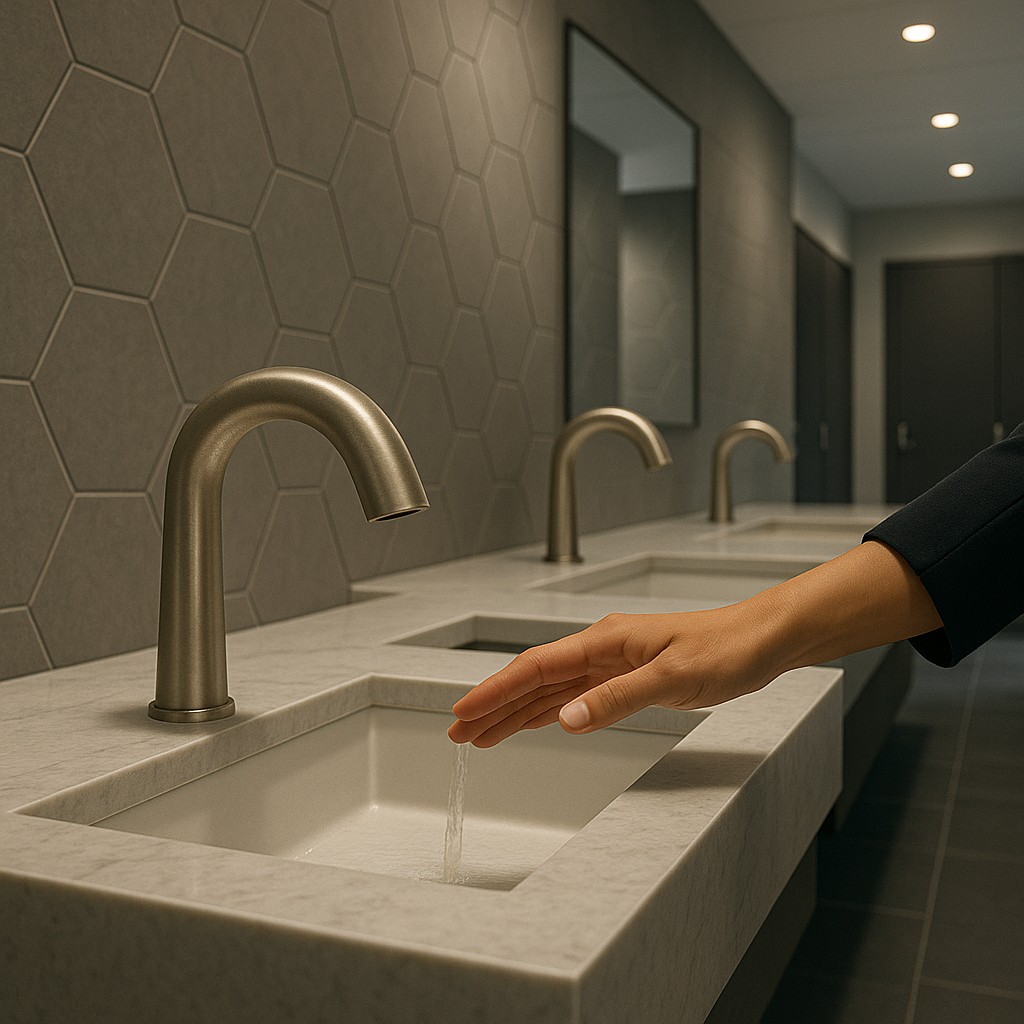
4. Part Life and Longevity
Touchless dispenses with physical handles and knobs—the most susceptible to vandalism and wear and tear in public bathrooms. The fewer mobile parts a faucet has, the fewer replacement parts must be installed.
Industrial-duty touchless valves typically have a 500,000+ cycle rating with solid metal body and hermetic electronic package. Field experience at transportation terminals has shown that the mean time between failure (MTBF) for sensor faucets approaches twice that of manual valves.
Even in busy buildings with strict cleaning schedules, properly installed touchless faucets function reliably for multi-year periods of time, requiring only the occasional simple filter cleaning or battery swap within maintenance windows.
5. Labor Hour Savings
Operations in buildings’ best-kept secret in the budget of any building is maintenance labor. Each leaky, clogged-up, or non-operating faucet has to be repaired by a professional technician—most likely during weekdays.
Because touchless systems are self-regulated and not misused by the customers, they reduce the number of unplanned maintenance calls to a minimum. Battery replacement or filter cleaning can be scheduled during regular check-ups, making operations more convenient.
Case Example
A large Southeast convention center eliminated over 1,200 man-hours of annual maintenance when it replaced all of its faucets and dispensers with networked touchless units. Those man-hours were redirected to preventive maintenance on other aspects of the critical infrastructure, maximizing facility efficiency.
6. Hygiene and Brand Perception as Added Value
Although this article is produced keeping cost considerations in view, let us observe that touchless technology ensures hygiene and customer satisfaction, which indirectly compensates in the form of reduced maintenance.
Spotless bathrooms yield fewer complaints and less vandalism. Less touching means less mess, less clogging, and less janitorial intervention.
For facilities managers, that translates into healthier surroundings and reduced cleaning expenses—a double advantage enhancing operational performance and image.
7. ROI-Driven By Data: The Maintenance Equation
The buildings that research the ROI of touchless technology typically discover that initial hardware costs are easily recovered through:
- Reduced maintenance requirements
- Reduced water and energy consumption
- Managed maintenance cycles
- Extended component life
- Better cleanliness and user satisfaction
In actual use, most large buildings recoup their investment in 12–24 months, then achieve a further 20–30% average annual savings on faucet maintenance.
Long-Term Benefits
Proactive facility managers increasingly see field data as a long-term asset to be retained. Data derived from networked touchless fixtures not only reduces maintenance costs but also serves to inform future capital planning—flooded toilet replacement prediction forecasting, use forecasting optimization, and sustainability target optimization.
8. The Future: Smarter, Leaner Facility Operations
Development of business restroom technology is progressing towards full integration of the IoT, and faucets, soap dispensers, and flush valves communicate with each other on networks they share.
The ability to capture, analyze, and respond to that data in real time comprises the future of affordable facility management.
In fast-moving environments where inefficiency and downtime have a high cost, moving to touchless, data-based systems is not an update—it’s an investment in long-term performance.
Touchless Technology & Maintenance Savings
| Aspect | Key Insight | Result / Data |
|---|---|---|
| Maintenance Calls | Touchless reduces service calls by 25–35%. | Fewer leaks, less wear, lower repair costs. |
| Smart Monitoring | Telemetry enables predictive maintenance. | 40% fewer repair calls; 18% lower upkeep. |
| Water & Energy | Cuts use by 30–50%. | 42% water and 25% energy savings; ROI < 18 months. |
| Durability | Fewer moving parts, longer lifespan. | 2× mean time between failures. |
| Labor Savings | Less reactive maintenance. | 1,200+ labor hours saved annually. |
| Hygiene & Image | No touch = cleaner, vandal-resistant restrooms. | Better user satisfaction and fewer complaints. |
| ROI & Future | Payback in 12–24 months. | 20–30% ongoing annual savings; IoT-ready systems. |
Conclusion
The numbers are proof enough: touchless technology is no nicety—it’s a maintenance strategy.
By reducing wear, preventing waste, and enabling informed decision making, it redefines the cost proposition of restroom maintenance. During a period in which every dollar in operations counts, wisdom on the ground ensures that going touchless is the smart choice for busy buildings to deliver sustainable, cost-efficient performance.
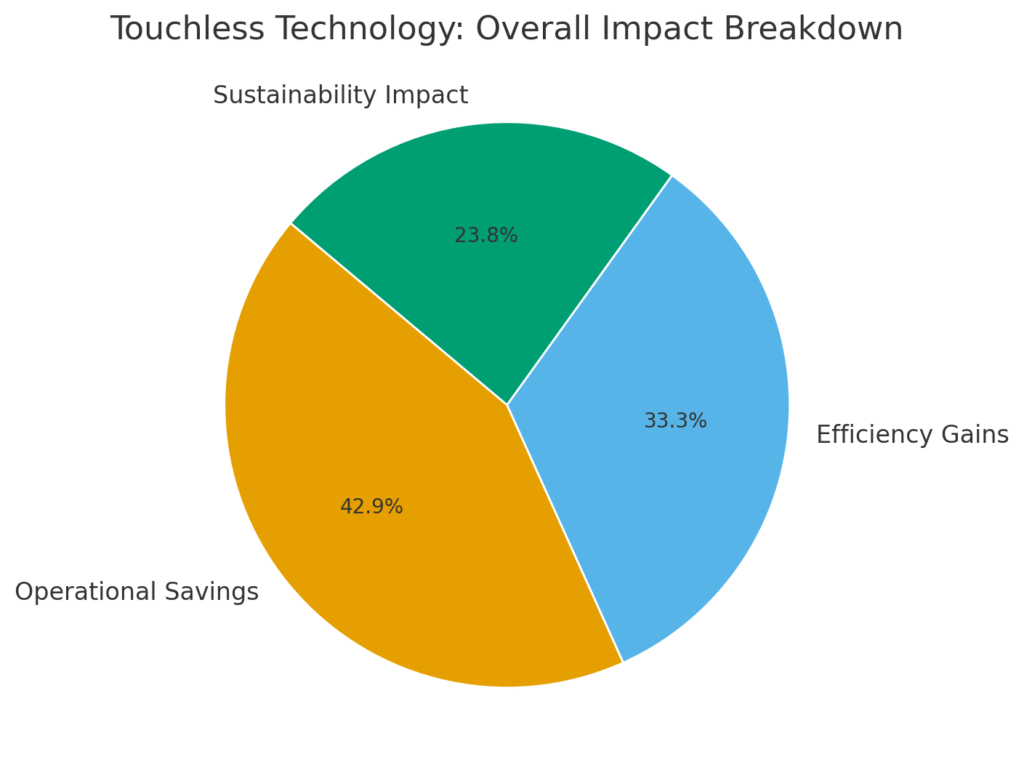
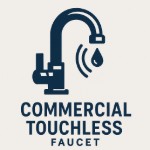
Leave a Reply